It’s easy for Israelis to love aliyah (the immigration of Jews to the land of Israel), the relationship with olim, the immigrants, is a bit more complex. A classic parody from the 1970s by Arik Einstein and Uri Zohar presents a concise and hilarious view of the history of aliyah, beginning with two Russians in white peasant shirts rowing ashore in a small boat, their arrival regarded with skepticism by two Arabs on land (all parts played by Einstein and Zohar). Russia, Poland, Germany, Yemen, Morocco and finally a pair from Georgia in the former Soviet Union – each successive immigration with its own accents, customs, culture and usually an idealized vision of life in the promised land, each regarded with a certain amount of skepticism and superiority by the “natives,” who have already been in Israel for at least half a minute.
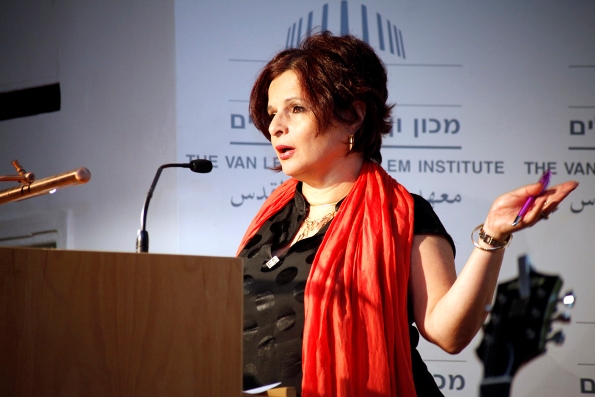
Dreams, disappointment, diversity and friction; aliyah and olim are central to Israeli culture. Yet much like the parody, event follows event so quickly that there is little time or attention given to analyze the processes and relationships. The Forum for the Preservation of the Audio Visual Memory in Israel, founded in 2005, is dedicated to ensuring the preservation and accessibility of audio-visual materials which will enable us, and future generations, to reflect on these and other aspects of Israeli culture, politics and history. From Russia With Love: History, Art, Culture, the 7th annual conference of the Forum, edited and directed by Billy Segal and Liat Benhabib, produced by Jonathan Nadav and moderated by filmmaker Dan Muggia, was held at the Van Leer Institute on Friday, July 8, 2011 as part of the 28th Jerusalem Film Festival.
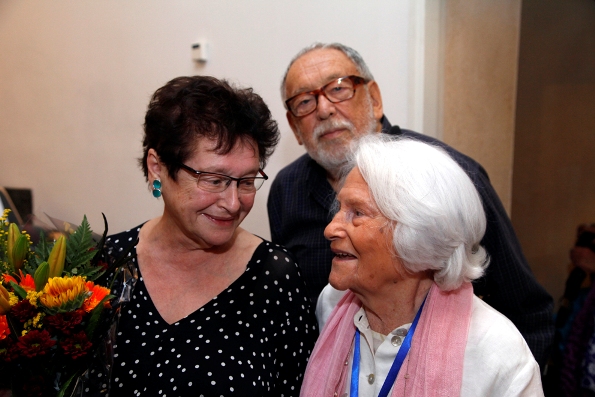
Filmmakers Lena and Slava Chaplin were recognized with a Lifetime Achievement Award from the Forum. Boris Maftsir dicussed their work, which includes the 2001 film A Trumpet in the Wadi based on the novel by Sami Michael, and the 2003 Haya O Lo Haya, starring Yevgenya Dodina as legendary actress Hana Rovina. Maftsir described the couple as “always looking for something fresh and new…they gave us something so rare in film, it gave us distance.” In accepting the award, Lena Chaplin said, “I am very moved. We arrived 35 years ago, we didn’t know a word of Hebrew. When we came to Israel there was only one television channel, we had no chance of working in our profession. Now we find ourselves after 70 films – it’s a miracle! We met so many people who helped us with lots of patience for our language and our ways of working.”
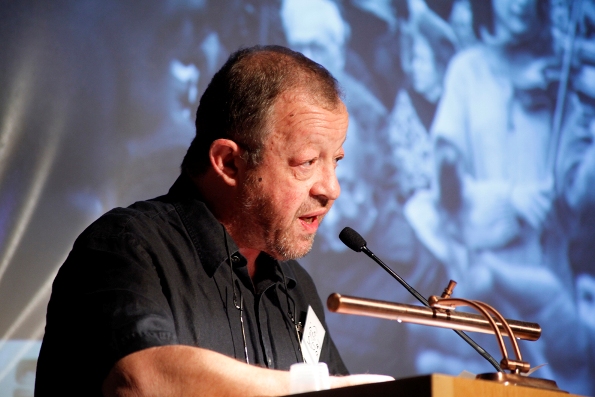
The conference opened on a festive note with a summary of the achievements of the past year, including the designation of the IBA (Israeli Broadcasting Authority) archive as a national heritage site. Jonathan Nadav noted that “This is the stage in which standards are determined; these decisions will have significant influence and implications for the future.” Billy Segal, Head of the IBA Film Archive, said that the archive has received funds for a pilot program to digitize existing materials and establish a website that will make them accessible to the public. Another recent landmark is the renewal of the National Library, a project which includes the establishment of a digital database and a new building. David Blumberg, Head of the National Library, said that “In recognition of the importance of preserving the cultural memory the library is beginning to receive the status it deserves.”
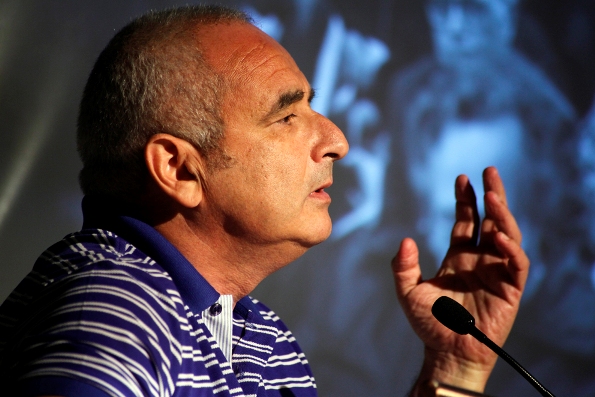
Accompanied by rare and fascinating archival film clips, the program focused on the relationship between Russian Jewish culture and Israeli culture, with each speaker presenting a different perspective. Former Knesset member Roman Bronfman, currently writing a book on Russian immigration in the 1990s, made the claim that size does matter in the cultural encounter between those coming from the vastness of the Russian empire and this small country. One of the characteristics of the group of immigrants who came in the 90s is that they remained culturally apart, speaking Russian and perhaps more important, teaching Russian to their children and developing an independent cultural network with extensive Russian language media and events. Yet Bronfman expressed hope for a creative meeting of the two cultures in the generation that came to Israel as children, now 25 – 35 years old, who “have the culture of their parents and also that of the country they live in…they are in Bezalel, Shenkar, Technion and their presence is felt in great numbers. They experience the freedom of creation in democratic Israeli culture.” Bronfman mentioned filmmaker Dover Kosashvili as an excellent example of this “fertile meeting.”
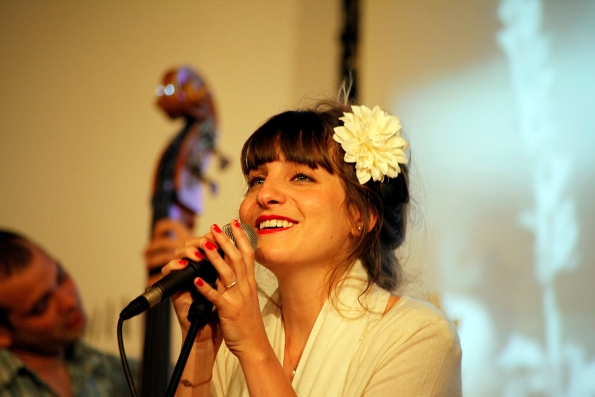
The Forum has a sense of fun like no other conference I have ever attended, amplified by the power of visual media. Moderator Muggia presented a medley of clips illustrating “the attempt to transform every Russian into a Sabra and every Yemenite into a Siberian.” Singing Russian songs in Hebrew translation were Shlomo Artzi in a white peasant shirt, the late great Yemenite diva Shoshana Damari and even Shlomi Shabat and Boaz Sharabi teamed up for tune with lyrics by Yevgeny Yevtushenko. Shades of Colors, Shades of Voices was a lovely multidisciplinary interlude of new arrangements to the songs of the poet Rachel, accompanied by archival footage and video art.

Dr. Ariel Hirshfeld discussed the influence of Russian culture in Israeli song, and even whistled a song or two. Hirshfeld stressed that many of the cultural leaders were not, in fact, fluent in Russian, and therefore much of the impact of Russian culture can be traced to poet Avraham Shlonsky who contributed to the cultural exchange with artistic translations that became part of the Israeli canon. Hirshfeld traced the cross-cultural trajectory of a song most Israelis know as “Bearvot HaNegev” (in the Arava – Negev desert), with reference to Tlila Eliram’s research. Originally На опушке леса (roughly – in the forest) written by P. Mamaychuk with music by L. Shokhin, the song travelled far from its Russian roots. Beginning as a waltz, an unknown translator turned it into a Hebrew marching song called Sham Harhek BaYa’ar (there, far in the forest) popular in the 1940s with youth groups. A new translation to Hebrew by Rafael Klachkin, Bearvot HaNegev, was recorded in 1948 by Yaffa Yarkoni. “It became an anthem in that heroic time,” said Hirshfeld, “but it didn’t stop there. It was recorded by Zohar Argov and became one of his most beloved songs.”
That information set the audience laughing, and Hirshfeld didn’t miss a beat, saying, “Your laughter is revealing,” reflecting the intricacies of cultural stigmas still alive and kicking in Israeli culture.
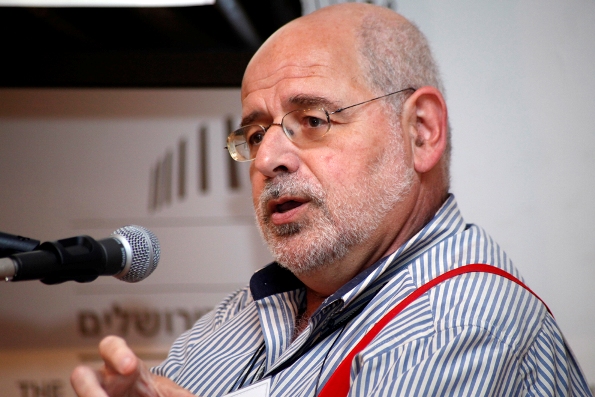
Exploring the dramatic aspects of the relationship between Israeli and Russian culture was theatre critic Michael Handelsaltz, who discussed Habima and Gesher theatres. Habima began in 1913 with three young people working as a collective – Nahum Tzemach, Menahem Gnessin and Hana Rovina – who were not trained in theatre, but wanted to start a theatre in the Hebrew language in Moscow, which was for them, “a national act,” explained Handelsaltz, and continued their story saying, “since we don’t know how to do theatre we won’t begin at the beginning we’ll go right to the top to the Moscow theatre of Stanislavsky and ask him to teach us how to do theatre. On their part it was a kind of Avodat Kodesh, (holy work) that is why it is called Habima and it will be in Jerusalem. But they had a problem because Stanislavsky could only see them on Yom Kippur.”
An amusing historical overview of Habima’s success in Europe and the US, and their triumphant reign in Israel was accompanied by Handelsaltz’s analysis of the differences between Russians and Israelis in their use of voice, a distinction that he feels had far-reaching impact on Israeli theatre. “Because they (Habima) came with the seal of “theatre” that became theatre that is how one must act real theatre,” said Handelsaltz. The implication for Israeli theatre at the time was that actors onstage spoke Hebrew with a Slavic accent, whether or not Russian was their native language, a tradition that continued through the 30s and 40s. Handelsaltz further said, “If not for Habima we wouldn’t have the Cameri because they would not have something to rebel against,” as the Cameri established themselves as a modern, Israeli theatre, in which the language onstage sounded like the Hebrew spoken on the street.
Handelsaltz contrasted the arrival of Gesher Theatre in 1991, “a group of actors with a definite leader, Yevgeny Arye, they all studied and worked and performed together in Moscow.” The environment they entered was also different: while Habima worked to introduce Hebrew, Gesher arrived to an established Israel in which Israeli theatre in Hebrew was long since a thriving entity. Yet Gesher became pioneers in their own way. “At this time,” said Handelsaltz, “there was already an audience of close to about a million Russian speakers, that exists without connection to the Israeli mainstream…To this day, great theatres from Russia arrive in Israel …but these theatres aren’t looking for us (Hebrew speakers), they have millions of viewers in Russian, they perform for a Russian audience, they’re here and gone and we didn’t know, have no inkling, unless we discover them by chance. It is to this situation that Gesher arrives and in contrast to other theatres who are willing to live apart, they said: No, we’ll create this situation together.”
Praising the theatre for its dedication to the art of theatre, Handelsaltz drew similarities between Gesher and Habima in terms of their use of voice onstage. To his ear, the Russians actor’s voice emerges from a deeper place in the body; the voice reverberates in a deeper echo chamber in the chest. Handelsaltz said that in contrast to the actors in Gesher, for the Israeli actor, “there is no investment in producing a voice and in creating beauty.”
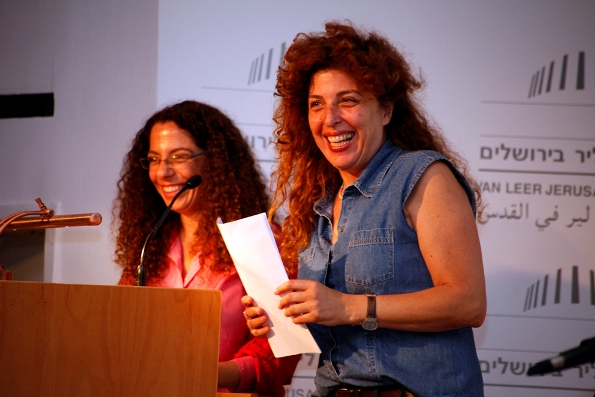
Two preservation success stories were shared at the conference: Yigal Hayo Mulad discussed Haim Gouri and Jacquot Erhlich’s Flames in the Ashes, screened at the 2011 Jerusalem Film Festival; and Liat Benhabib, Director of the Yad Vashem Visual Center, and Yael Perlov talked about their restoration of David Perlov’s 1979 film Memories of the Eichman Trial. Originally shot on 16 mm reversal stock, the film was only broadcast once, on Channel 1. Benhabib recounted that they found “Beta cassettes without titles that were already yellowing. There was a three and a half minute sequence without sound.” They considered finding people who could read lips to decode the segment, but then Yael Perlov (David Perlov’s daughter) and her mother searched again and found a VHS cassette with the label “slightly damaged.” The two told the adventures of the restoration process, such as working with different sources for the soundtrack which made synchronization a problem. The restored film was screened in Israel on May 2, 2011 and will be screened at the Pompidou Museum in November 2011. Benhabib and Perlov hope that in the future it will be accessible to the public on DVD.
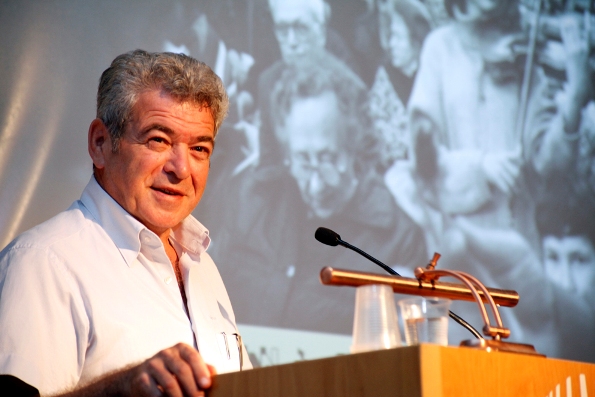
Leonid Blechman, CEO of the Russian language TV 9, known as Israel Plus, described their current project: a documentary marking 20 years to the last major immigration to Israel from the former Soviet Union. The channel made a creative effort to locate immigrants who were interviewed or featured in the media at the time and follow up on their stories. TV9 aired ads with news clips from their archives, asking viewers “Do you recognize anyone?” Many wrote in, either identifying themselves – “I am the girl with the green eyes” – or others, their responses should make for interesting viewing when the film is completed.
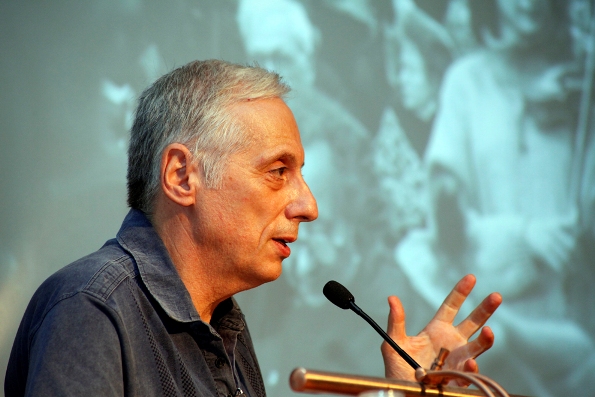
Shmuel Ben Zvi, Director of International Broadcasting at IBA Kol Israel, with radio broadcasts in several languages, including Russian, English and Amharic, shared his own story. Providing a perspective both historical and personal, Ben Zvi said, “I was arrested forty years today in Vilnius.” Arrested along with 7 others, he was shipped to work in a remote forest. Ben Zvi recalled, “We snuck in a radio…we heard that 8 people were arrested and my name was mentioned.” The radio was a source of hope and a form of salvation, as he explained that having one’s name broadcast meant that “you could not be made to disappear.” Ben Zvi said, “At that moment I made a vow that when I make aliyah I will try to work in the radio.”
Ben Zvi, who immigrated to Israel in 1971, spoke of the changes in the cultural environment, saying, “We (those who came in the 70s) wanted to be Israelis in every way. Literature… Lehrmantov, Pushkin, were everything to me and the goal was to forget everything. To be Israeli meant to be immersed in Israeli culture. The wave of immigration in 1990s brought back things that we wanted to forget. We began to return to our roots.” Commenting on the current situation, Ben Zvi said, “There is a process taking place in Israel, suddenly a feeling that we are on the right path. It is important to have this dialogue between those who came here and those who were born here and those who live in the Diaspora everywhere in the world.”
Image credit: Many thanks to Oscar Abosh, for bringing this wonderful conference closer to readers with his photographs!





